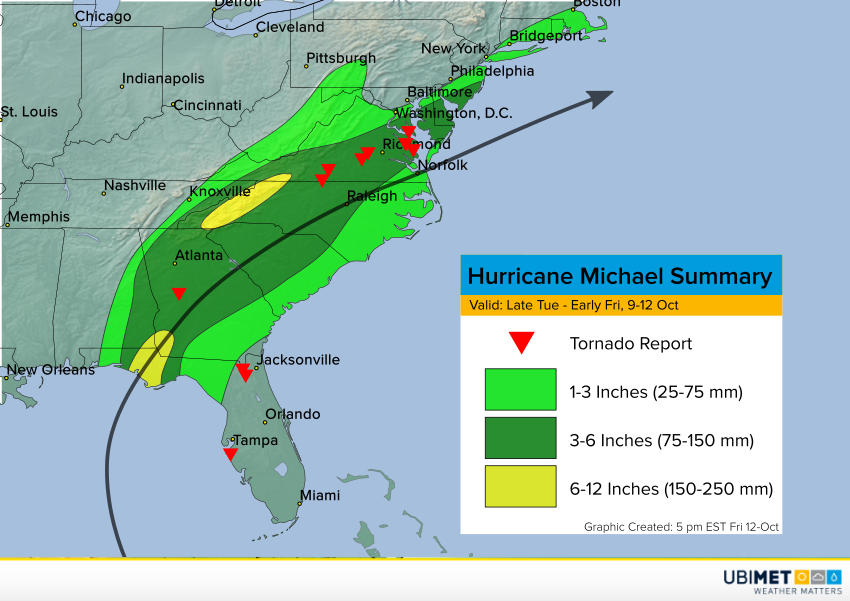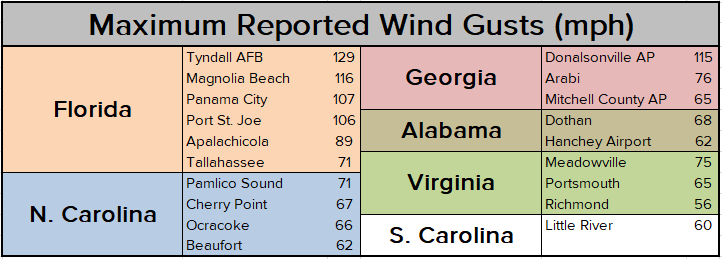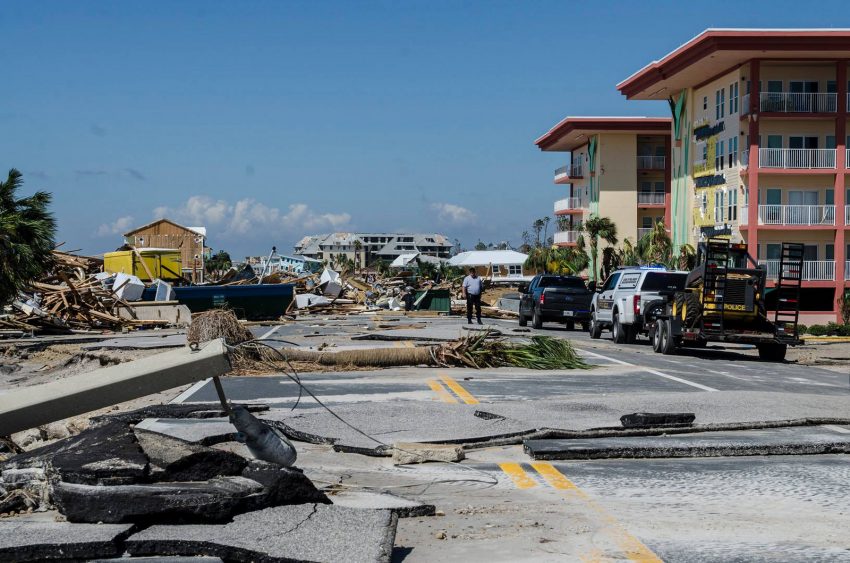Former Hurricane Michael, now a strong post-tropical low, is sprinting into the North Atlantic tonight. Michael slammed into the Florida panhandle on Wednesday and rolled up the Eastern Seaboard through early Friday. Officials are now starting the arduous task of tallying the tremendous damage done by one of the strongest hurricanes ever to hit the United States.
#Michael has taken and changed lives, left communities in ruins, and even altered the coastline itself. Some of the landmass of St. Joseph Peninsula State Park, just offshore Port St. Joe, no longer exists. It takes powerful storm surge and waves to do this. pic.twitter.com/Q3f2BCmNSZ
— Dr. Rick Knabb (@DrRickKnabb) October 12, 2018
NEW: Devastating imagery from the Florida Coast, before & after Hurricane Michael.
Mexico Beach, FL: near total destruction. pic.twitter.com/Hb9Rl9UMKo
— Dakota Smith (@weatherdak) October 12, 2018
Aerial view of catastrophic damage to Mexico Beach, Florida. The town took a direct hit by Hurricane #Michael on Wednesday. A devastating category 4 hurricane with winds of 155 mph. Nearly a category 5. pic.twitter.com/VaVBLmum0W
— Zach Covey (@ZachWPDE) October 11, 2018
Michael provides a stark contrast to history-making Hurricane Florence which devastated portions of the Carolinas almost a month ago. Florence was a powerful category four hurricane over the open Atlantic, but it weakened before making landfall. The damage caused by high winds was relatively minor. Most of Florence’s deadly impact came from torrential rain as the cyclone slowed to a crawl. Many rivers in the region crested at new record high levels, flooding thousands of homes and businesses.

Michael moved much more quickly and rainfall totals were much lower (see map above), though still sufficient to produce significant flooding. However, Michael was in the process of rapidly intensifying as it made landfall. Indeed, Michael likely would have reached category five status if it hadn’t made landfall when it did. Michael was the third-strongest hurricane on record to strike the U.S. in terms of minimum central pressure, and fourth-strongest in terms of wind speeds. Michael’s reach extended through the southeast and Mid-Atlantic, not only in terms of general strong winds but isolated tornadoes as well. The current tornado report count stands at 15, but more will likely be added as scientists survey the damage.

Wind damage where Michael’s eyewall moved through was extreme. The town of Mexico Beach was almost totally flattened. Millions of trees were snapped or uprooted from the Florida panhandle well into southwest Georgia. In fact, Michael was the first category three hurricane to move into Georgia in more than a century, despite having to go through northwest Florida to get there! Michael’s high winds persisted through the southeastern states. It’s estimated that up to a million households remain without power as of Friday evening, mostly in North Carolina. It will take weeks for some rural customers to have their power restored. Lead photo courtesy Staff Sgt. Carmen Fleischmann, Florida National Guard.
